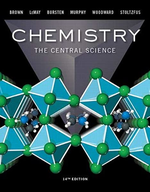?As shown in Table 15.2, the equilibrium constant for the reaction \(\mathrm{N}_{2}(g)+3
Chapter 15, Problem 15.78(choose chapter or problem)
As shown in Table 15.2, the equilibrium constant for the reaction \(\mathrm{N}_{2}(g)+3 \mathrm{H}_{2}(g) \rightleftharpoons 2 \mathrm{NH}_{3}(g)\) is \(K_{p}=4.34 \times 10^{-3}\) at \(300^{\circ} \mathrm{C}\). Pure \(\mathrm{NH}_{3}\) is placed in a 1.00-L flask and allowed to reach equilibrium at this temperature. There are \(1.05 \mathrm{~g} \mathrm{NH}_{3}\) in the equilibrium mixture.
(a) What are the masses of \(\mathrm{N}_{2}\) and \(\mathrm{H}_{2}\) in the equilibrium mixture?
(b) What was the initial mass of ammonia placed in the vessel?
(c) What is the total pressure in the vessel?
Text Transcription:
N_2(g)+3 H_2(g) \rightleftharpoons 2 NH_3(g)
K_p=4.34 \times 10^-3
NH_3
1.05 g NH_3
N_2
H_2
Unfortunately, we don't have that question answered yet. But you can get it answered in just 5 hours by Logging in or Becoming a subscriber.
Becoming a subscriber
Or look for another answer
